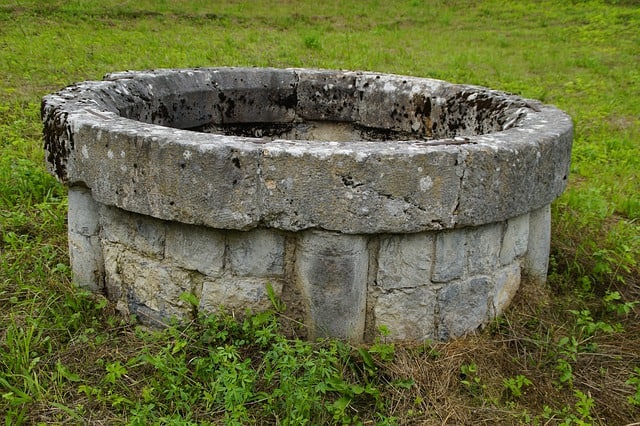Are you worried about the low water level of your well and are thinking about dumping water into it? The low well water level is one of the main concerns of those who rely on the well for their household water supply. On the other hand, some factors can affect the water level of your wells like over drilling, climate, and weather. If you are wondering if dumping water into your well will make any difference, read the rest of this article below for the answer.
Can you dump water into a well? It is not recommended to add water to your well. Aside from not making any difference to alleviate low water supply, especially during the drought season, it can also contaminate your water supply. In case you have added any water of unknown quality of the water in your well, you need to have the water immediately tested to find out if it is safe to drink.
The yearly droughts can take their toll on those who depend on private wells for their water supply. How do wells get water? Can I add water to my well? How long does well water take to refill the water? These are some of the questions that we will discuss. Continue reading for more tips and information.

Can I Add Water to My Well?
You shouldn’t add water to your well. For a well to have water in it, it should be drilled to a depth below the water table in your area. Bear in mind that if you add water to a well that is above the water table, it will only be pointless. This is because any water that is added above the level of the water table will just flow back out of the well and into the surrounding water table.
How Do Wells Get Water?
Wells get water through groundwater and surface water. Well water draws its supply from the sources of water that are found beneath the surface of the earth. This type of water supply is otherwise known as groundwater.
Groundwater
This includes water that naturally comes from below the surface of the earth and flows through bodies of water like springs. This also includes water that is contained in different porous materials that are located beneath the surface of the earth which include gravel, silt, sand, and clay. Water collects below the ground and into structures called aquifers.

Spring-Fed Wells
Well water can also come from springs. In some areas, underground springs feed water into wells. There are some households with more than one well on their property. One of the wells derives water from aquifers and the other well is fed by an underground stream.
Why is My Well Not Providing as Much Water as Usual?
If it is your first time experiencing a water shortage, the first thing that you need to do is to check your pump and pressure system is there is any mechanical failure. Next, check the well water level for any changes. Drought or dry conditions can affect the level of your water supply. On the other hand, if it is not dry season and you still have a low water supply, the problem may lie in your well or pump system. The size of the aquifer that the well taps into can also be the reason.
Will Deepening My Existing Well Provide More Water?
In some instances, deepening your existing well can provide more water. When you deepen your well, you may find additional groundwater and also provide additional drawdown. On the other hand, you need to take caution especially if you live in an area that is known to have poor-quality natural water at depths lower than high-quality freshwater.

In such cases, deepening the well and penetrating a formation with poor-quality water can contaminate the freshwater formation. As a result, your well will be unusable. Furthermore, it can also cause wider contamination and have long-term impacts on other wells located in the area.
How Do I Measure the Static Water Level in My Well?
You can measure the static water level in your well with the use of a survey tape or electrical measuring tape that is specifically designed to measure water levels. If you do not have one, you can a homemade electrical measuring tape. You can use an electrical wire with both ends exposed. Next, connect an ohmmeter to the upper end of the wire. The lower end is the one that should be lowered into the well.
✅ Video – Measuring the Static Water Level and Depth of a Well
RPS Solar Pumps shared the video below on YouTube. It talks about how to measure the static water level and depth of a well. In the video, Mike discusses the five methods to measure the static water level of your well. Check out the video for more tips and ideas.
Does Rain Water Fill a Well?
Rainwater will not fill a well. The truth is that more than 95% of rainfall does not go directly into the well. To learn more about this topic, check out this article that we have shared titled, does rain fill your well? We have shared an in-depth discussion about how rainfall affects your well water supply.
Options to Consider During Periods of Drought
A careful review of your water consumption practices, as well as an assessment of the entire components in your pressure and plumbing system, can tell where improvements can be made. There are some factors that you need to consider that can affect your well water supply during periods of drought. By following these factors, you can implement water conservation. Let us learn more about these factors below.
Lowering the Intake Depth
By lowering the pump or pump intake deeper into the well, you can improve your water supply. On the other hand, you need to check the specifications of your pump or talk to a licensed well contractor before you make any adjustments to the pump intake. This way, you can determine the maximum recommended depth and pumping rate for your well. You can also read this article that discusses if a submersible pump will run without water. Read the article to find out the answer.
Replace the pump
You can replace your existing pump with a larger one if it cannot achieve the recommended pumping rate. However, make sure that the larger pump replacement should not exceed the maximum safe pumping rate for the well. Bear in mind that a pump that is too large can cause irreparable damage to the well. Talk to your well contractor to determine the well’s specific needs.
Boost Pressure Tank Size
By having a larger or an additional pressure tank, you can have more water storage in the pressure system. The additional storage can be able to provide you with sufficient water during the drought or dry period.
Check and Repair Your Well
In preparation for the dry season, make sure that you check and make needed repairs to your well. If your well has decreased yield while maintaining its static water level, this could mean partial plugging of the bottom of the well. This can happen especially to drilled wells or drilled wells with screens. Consult a well contractor who is knowledgeable about the different causes of well plugging and rehabilitation methods to advise you on what should be done.

Deepen Your Well
If your place experiences a water shortage because of the dry season, you can deepen your well. However, you need to first review your water well records or the hydrogeological information for your immediate area before you start deepening the well. By doing this, you can find out if freshwater aquifers exist below the depth of your well.
Above-Ground Storage Tank
Another option that you can do is to add a temporary above-ground water storage tank. This is applicable if your water shortage is temporary because an above-ground water storage tank can effectively provide a short-term solution.
How Does Water Get into a Well?
Most wells get their water from aquifers and not from underground rivers or springs. These aquifers are layers of soil and rock with water flowing through their small pores. Groundwater slowly and gently drips through the small spaces within rocks and between loose materials like gravel and sand. Take note that water in aquifers can take centuries to flow back to the surface. The usual flow rate for water in aquifers is ten feet per year.

How Long Does Well Water Take to Refill?
How long well water takes to refill will depend on a few factors like the size of the well. Some shallow wells that are placed in gravel and sand geological formations can recharge and refill within 24 hours. Furthermore, wells that are located near streams or rivers can quickly recharge. On the other hand, some wells that are deep and have a small and semi-impervious recharge area can take many months or years to recharge fully.
How Many Years Does Water Well Last?
On average, the lifespan of a well is 30 to 50 years. However, they can last longer or shorter. This depends on different factors and circumstances. You can also check out this article that we have written titled, why is my well water brown all of a sudden? We have shared an in-depth discussion about the topic.
Conclusion
In this article, we have discussed if you can dump water into a well. We have found out that dumping water into the well is not only futile but can also contaminate the well. Many factors can result in the well running dry including human error and natural phenomena. Above, we have shared tips that you can do on how to maintain your water supply even if it is drought season. Thank you for reading!
